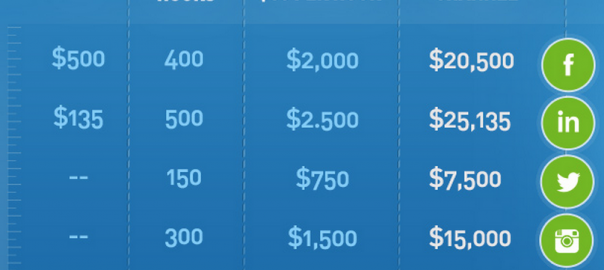
How do you know if your social media marketing efforts are effective? Which posts drive the most traffic? What social media metrics should you be monitoring? How do you interpret the numbers once you have them?
If you’re on social media for your business, you already know you should be measuring it.
But don’t measure social media just for the sake of having some numbers to report on. Instead, measure social media marketing efforts so that you can learn what works and what doesn’t.
Step 1: Set your conversion goals
Before you jump into measuring every single post, comment or like, first think about your business goals on social media.
What are you trying to achieve via your social channels? And which channels are key to those goals?
Social media can serve a variety of purposes, from generating awareness, to improving customer support or engagement with a community.
Your company’s social media conversion goals might be unique to your business, but in any case, you will want the audience you’re trying to reach to take action which can be measured, and ultimately has monetary value.
You’ll probably want your prospects or customers to:
- Fill out a contact form
- Make an online purchase
- Sign up for a newsletter
- Download a document
- Spend time on a webpage
- Visit your website
- Mention your brand more
- View a gif or a video
- Engage (e.g. share, RTs, like, follow, replies etc.)
- Use an online quote feature
- Request a demo
It’s not enough to focus on brand awareness by measuring likes, +1s or retweets. Only 34 percen of businesses feel that their social strategy is connected to business outcomes, according to Altimeter. This is why you have to demonstrate value and measure social media as it relates to your broader business goals.
Match your goals to actual metrics and behaviors you can measure.
Step 2: Measure social media conversions
Once you’ve listed out all your business goals and created the conversion metrics to measure these goals, it’s time to implement the tools and processes that actually capture them and start measuring.
Reach, traffic, leads, customers and conversion rates are all good metrics to measure those conversions. This may mean you need to add tracking codes to URLs, build custom landing pages, and so on.

In some cases, your social channels offer some form of built-in analytics. In other cases you will need to work with third party tools such as Brandwatch Analytics or Google Analytics.
If you’re unsure which analytics tools to use for which social channels, do a quick Google search, check out reviews, or ask around and you’ll find plenty alternatives.
Step 3: Assign value to each conversion
The next step is to assign monetary value to each of your conversions. There are 2 valuable ways you can do that; by using historical data or by estimating.
Historical Data:
Retracing your conversion value is easy when you know the lifetime value of your customer.
For example, if you know that 1 out of 10 people who download your report become a customer, and the average lifetime value of each customer is $ 175, then the value per download is $ 17.50 (10 percent of $ 175).
Estimating:
But if you don’t have access to historical data, use your experience and common sense. For instance, a reliable partner promises you the contact details of 500 new leads. How much are you willing to pay per lead? Don’t worry if you don’t have the perfect answer. You can adjust and revise that value once you have gathered the hard data.
Step 4: Measure total value per social channel
After you’ve worked out the conversion value, you will need to collect all the relevant numbers and the data from your analytics tool.
Correlate your social data to the value of your conversions in a spreadsheet or document of your choice.

Step 5: Calculate total costs per social channel
The fifth step is to measure social media costs by adding up the time spent, labor costs, social advertising costs, account fees, etc. per social channel.

Step 6: Analyze and report
The following step is to report your results.
Use your initial findings – the benefits and the costs of your social media marketing efforts – to calculate your return on investment per social channel.
Analyze what’s successful, what isn’t on your social channels and share these results with management, clients, or other important stakeholders.
ROI% = Benefits – Costs *100 / Costs

Step 7: Benchmark results and revise
Analyze all results to make improvements where needed.
Compare your numbers with what you expected, provide other contextual information and benchmark against your competitors, products or campaigns so that your stakeholders can easily understand what those numbers mean.
One of the great benefits of social media analytics is that you can easily put together regular reports on your social (hopefully) success. This is a also a good time to consider your schedule for weekly, monthly or even quarterly reporting. By accumulating your metrics over time, you’ll have valuable older data that you can compare with your new data.
Social media is never static. Carefully review how you measure social media. How are these numbers performing? Are you missing anything?
(386)







